Why are my citrus leaves curling? 5 reasons for warped foliage
Fruit tree experts discuss the causes and solutions for curling citrus leaves
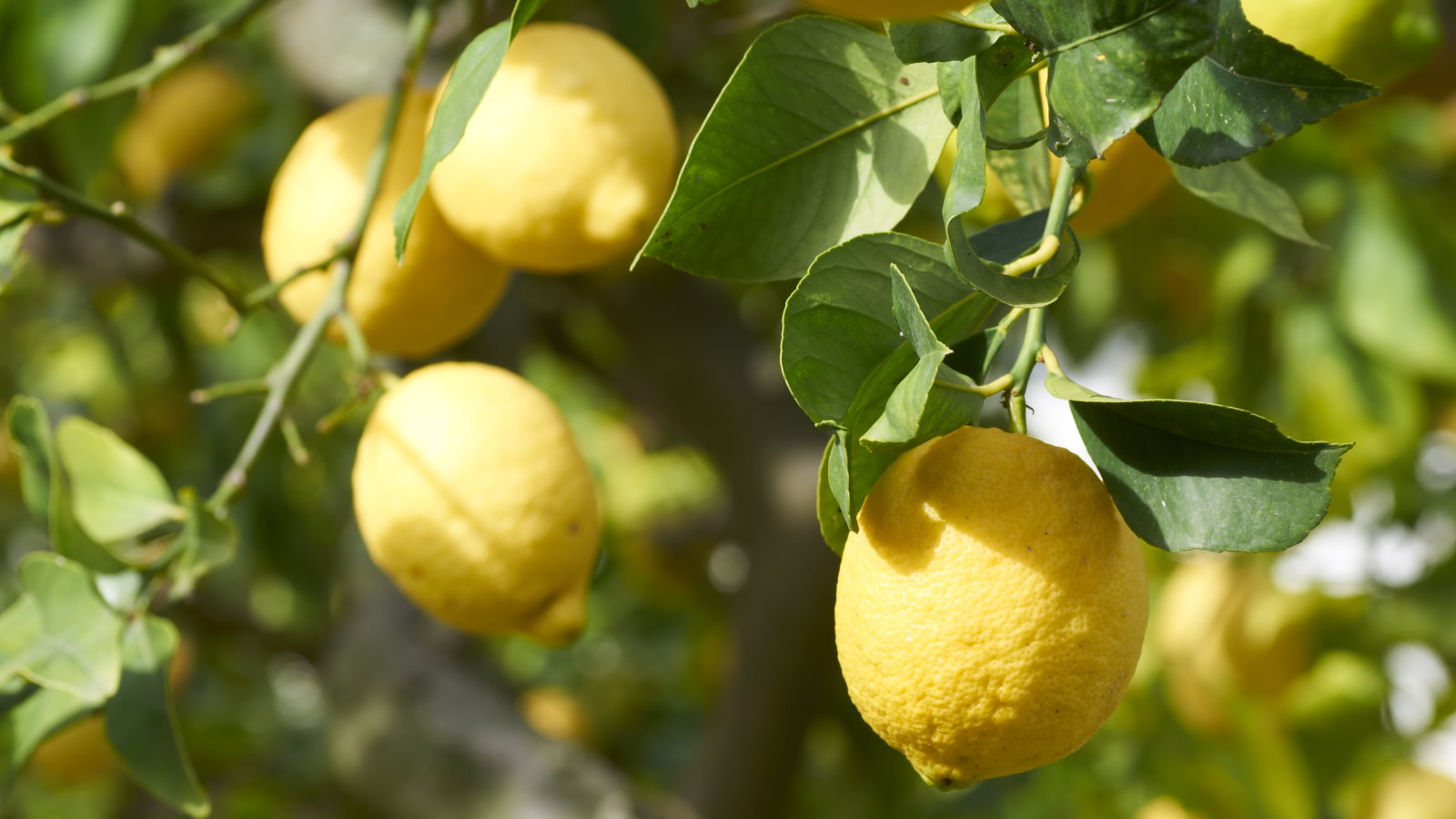

Q: I have a lemon tree growing in a pot on my patio. It has been happy for several years and gets moved indoors for winter, but I now notice that some of its leaves are curling. What can cause the leaves of citrus trees to curl up, and will it be simple to fix?
Citrus trees make fantastic additions to a space. Growing lemons, limes, oranges, or any other citrus tree brings with it beautiful and fragrant flowers and fruits. While there is much to enjoy, citrus trees are not the simplest fruit trees to grow and curling leaves is a sign that the plant is stressed.
The truth is that citrus leaves curling can be a result of many different factors that affect how happy and healthy the tree is. Such reasons include watering, nutrients, pests, and diseases. To shed some light on the issue, our guide looks in-depth at the reasons why your citrus leaves may be curling and what can be done to combat the problems.
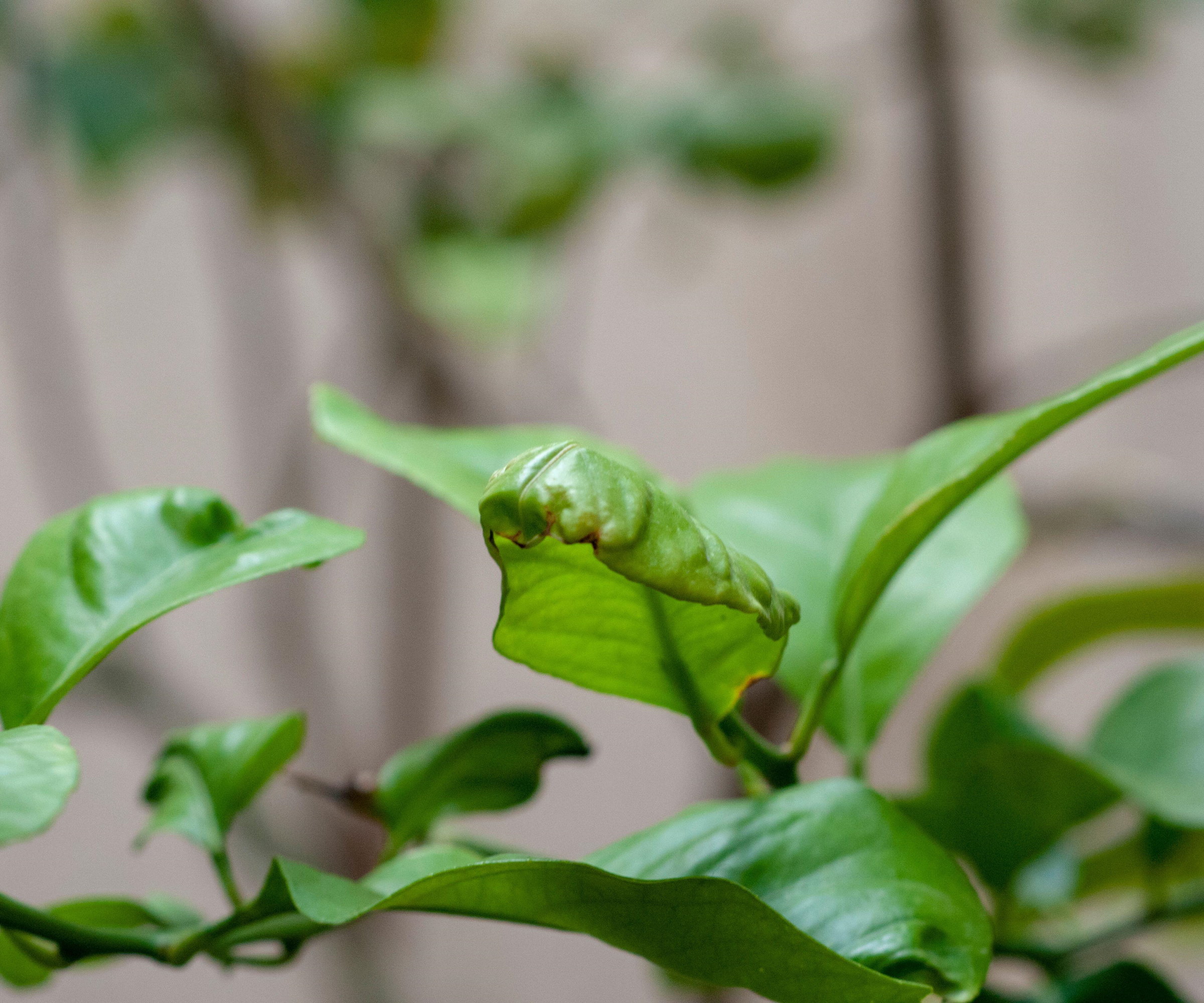
Why citrus tree leaves curl
Citrus leaf curl is a sign of the plant being stressed, it shows this by curling its leaves inwards. The leaves usually curl upwards along their length or from the tip in response to the stress. Along with any citrus leaves turning yellow, it can be a worrying sight, but what are the main causes of citrus leaves curling?
What causes citrus leaves to curl?
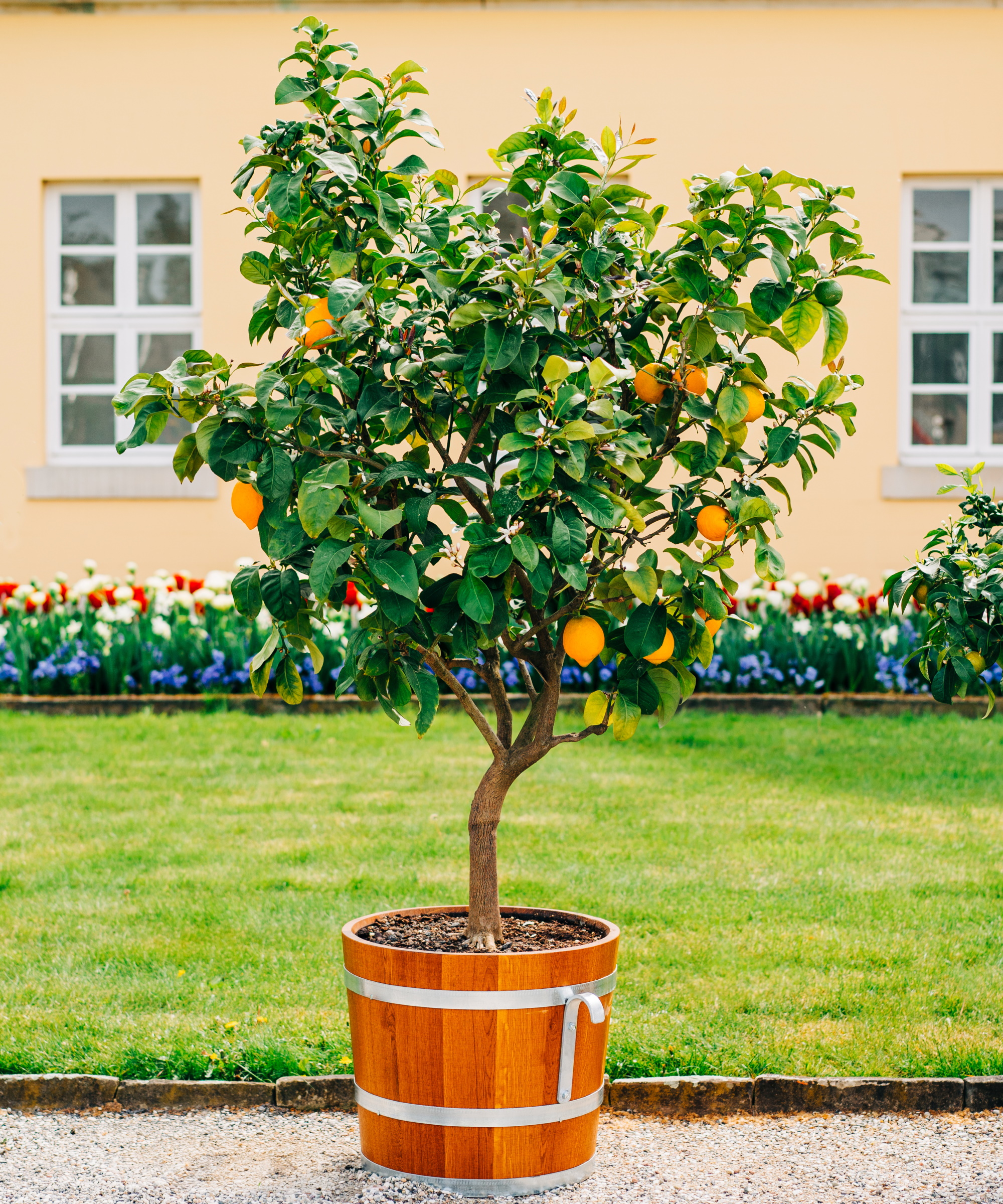
There are several potential reasons why the leaves of a citrus tree may start to curl. Whether you are growing the fruit tree in pots or cultivating a collection of indoor fruit trees - as citrus trees such as lemons are suited to growing indoors - this will impact how you care for them and can potentially contribute to leaf curl.
‘Citrus leaf curling can be caused by a variety of factors, including environmental stress like drought or overwatering, nutrient deficiencies, pest infestations such as aphids or mites, or diseases like citrus greening,’ says Susan Poizner, author and creator of Orchard People.
As for how to deal with the issue, Susan adds: ‘Proper diagnosis is essential to determine the underlying cause and address it effectively.’
To help you evaluate the cause of citrus leaves curling, and put together the best plan of action, let us take a closer look at the five issues and how to combat them to get any citrus trees back healthy and thriving again.

Susan is an urban orchard-ist, ISA Certified Arborist, and the author of two fruit tree care books, Growing Urban Orchards, available at Amazon and Grow Fruit Trees Fast, also available at Amazon. She is the creator of the award-winning fruit tree care training website Orchard People and trains global fruit tree growers through her online courses
How to fix citrus leaves curling
As highlighted above, the first step to fixing leaves curling on citrus trees is to identify the cause and then make practical moves to treat the issue.
Overwatering
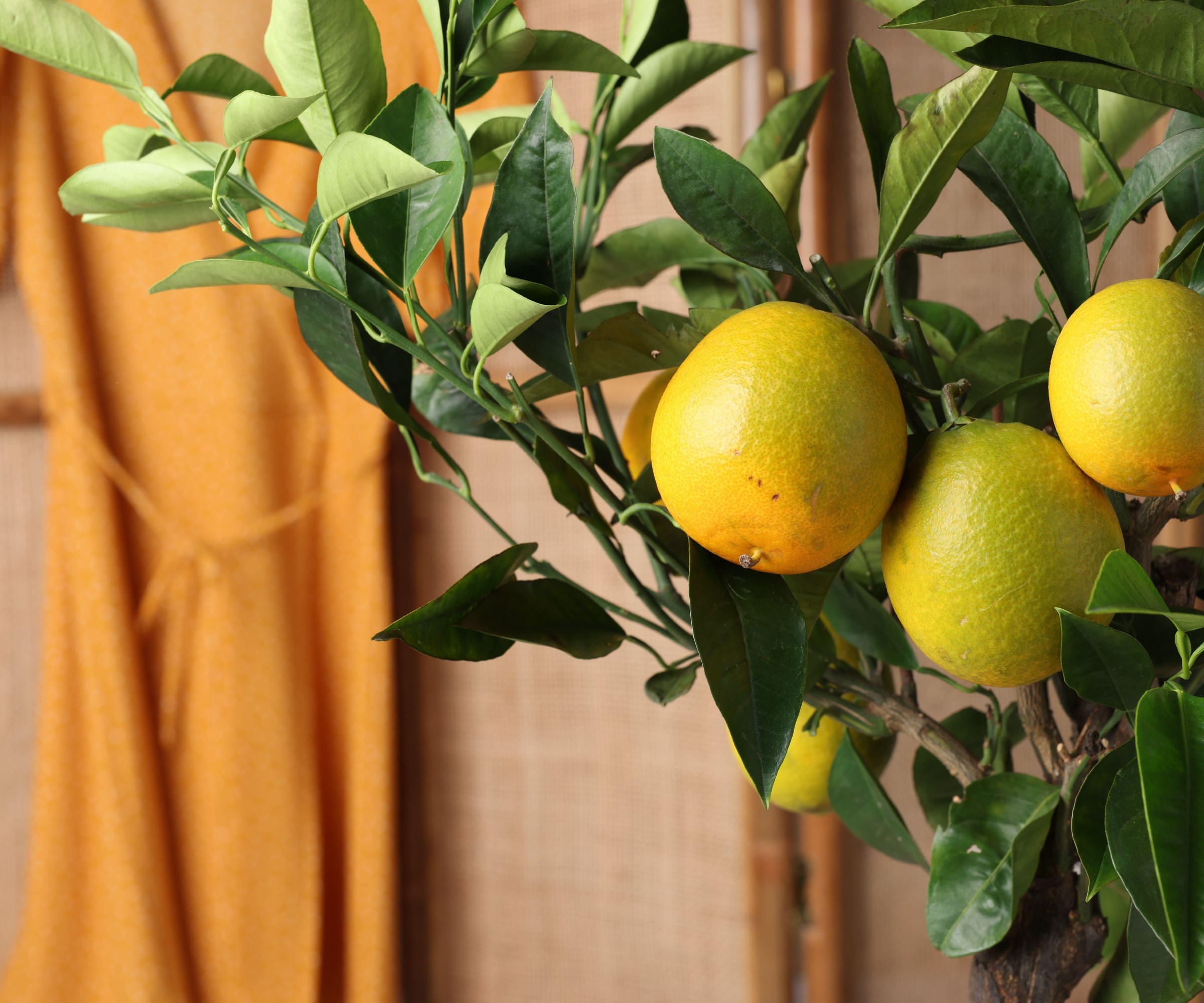
Curling leaves are a common sign of overwatering plants. Citrus trees do not like sitting in saturated soil for long periods and their leaves will curl, discolor, and drop when they are waterlogged. Too much water sitting around the roots reduces oxygen in the soil and affects the plant’s ability to photosynthesize.
Luckily you can fix an overwatered plant. If the citrus tree is in a container, consider repotting it into new well-draining soil and make sure there are drainage holes in the bottom of the container.
Refrain from watering the citrus tree again until the soil completely dries out. On many occasions, letting the soil dry and then adjusting your watering regime going forward can be enough for the plant to overcome a bout of overwatering.
Drought
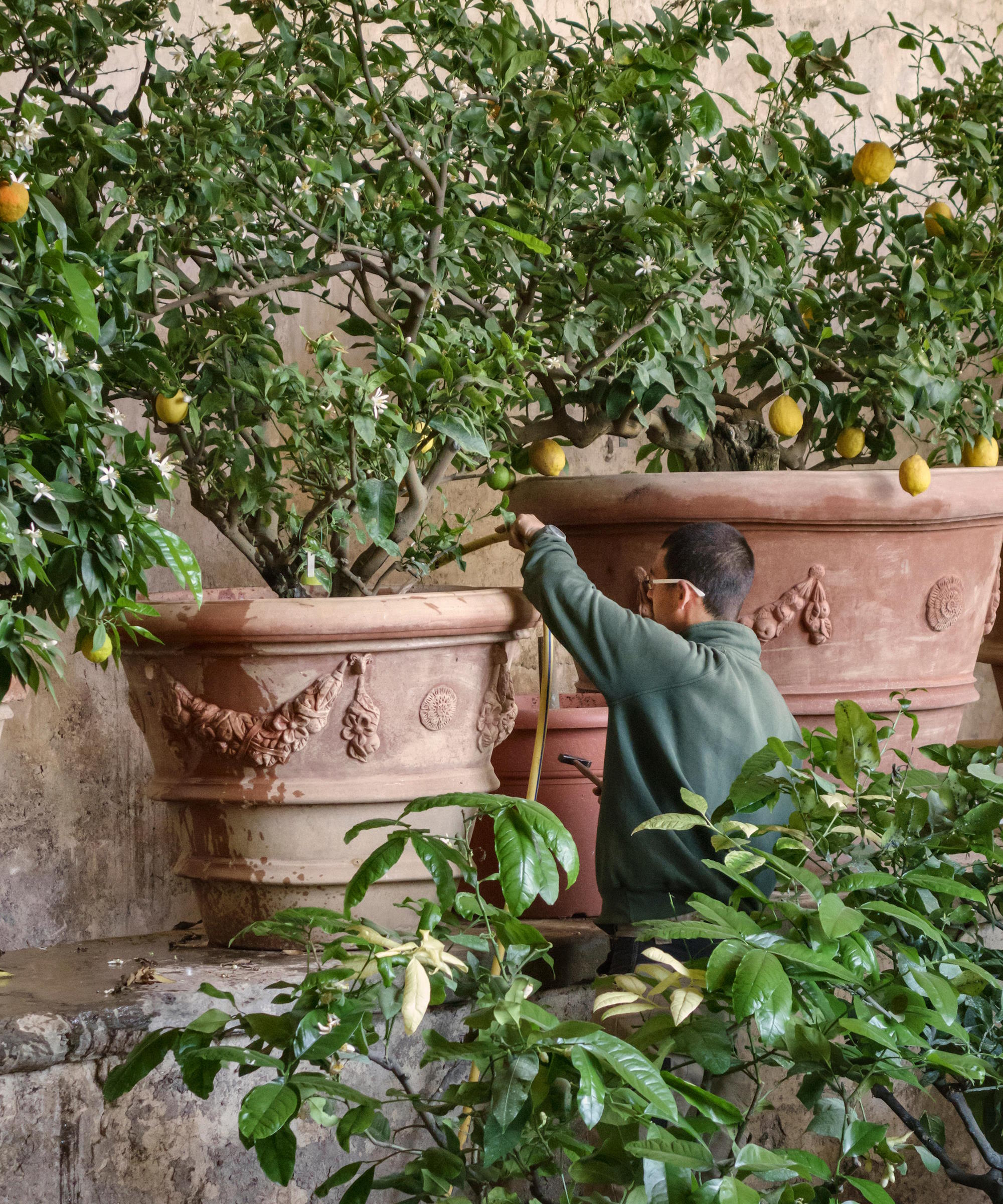
Leaves can curl to reduce their surface area in response to drought stress. This action decreases the amount of moisture lost through transpiration, as the plant attempts to retain as much water as possible to stay alive due to a lack of moisture.
Knowing how to water citrus trees and when to water plants is important to keep them flourishing. As well as the leaves curling, a lack of moisture will mean citrus trees struggle to produce fruit.
Established citrus trees benefit from deep watering at regular intervals, with the soil drying out slightly between waterings. The soil should not be fully dry for long periods - which would be a watering mistake and leave the citrus tree struggling for moisture.
Check the soil moisture levels using a soil moisture meter, available at Amazon, or use your fingers to check the moisture levels two or more inches under the surface when watering plants in containers. Potted citrus trees want to be watered deeply until the water flows out the drainage holes in the bottom of the pot.
If a lack of moisture is the cause of citrus leaves curling, regularly check the soil levels and adjust your watering practices to keep the tree adequately hydrated. Remember that young citrus trees, and those growing in pots, will need more frequent watering.
Nutrient deficiencies
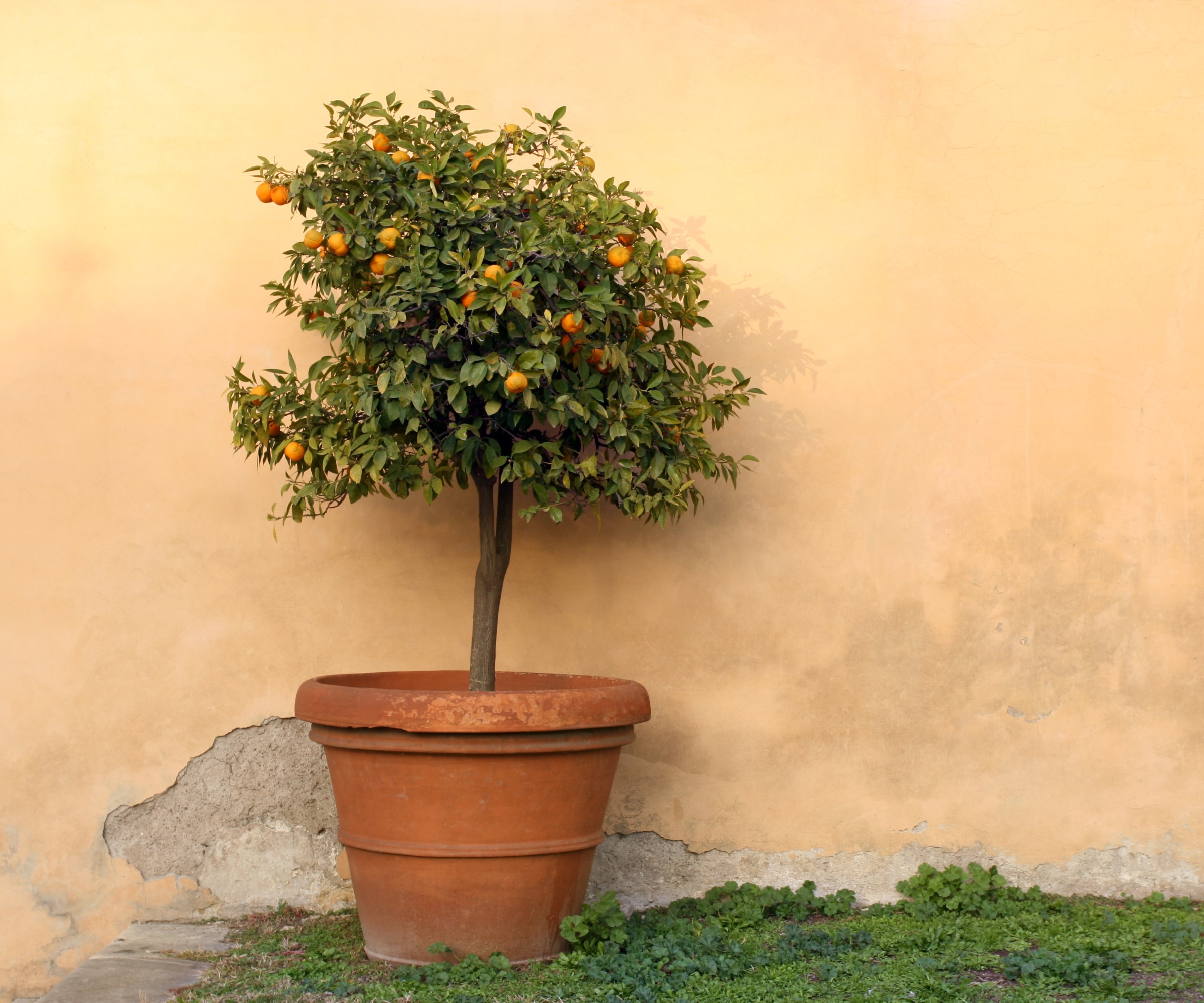
Citrus leaves curling can be the result of a lack of nutrients required for healthy growth. Citrus trees need the primary nutrients of nitrogen, phosphorus, and potassium as well as other macro and micronutrients.
Fertilize citrus trees in late winter or early spring and also in spring and summer to keep the trees growing and fruiting healthily. As for how to fertilize fruit trees, the best product to use is a balanced fertilizer designed for citrus trees.
‘You can purchase fertilizers specifically formulated for citrus trees that will be rich in nitrogen and contain added micronutrients such as iron, zinc and magnesium which are essential for their overall health and fruit production,’ says Fern Berg, tree expert at Tree Vitalize.
‘The benefit of using a fertilizer specifically formulated for the type of tree you are applying it to is that it will come with application instructions to help you to provide the ideal amount for the size or age of your tree, and the season you are applying it in.’

Fern is the founder of Tree Vitalize and has planted and currently cares for over 100 different native and exotic fruit, nut, and ornamental trees. She also cultivates an extensive vegetable garden, several flower gardens and cares for an ever-growing happy family of indoor plants.
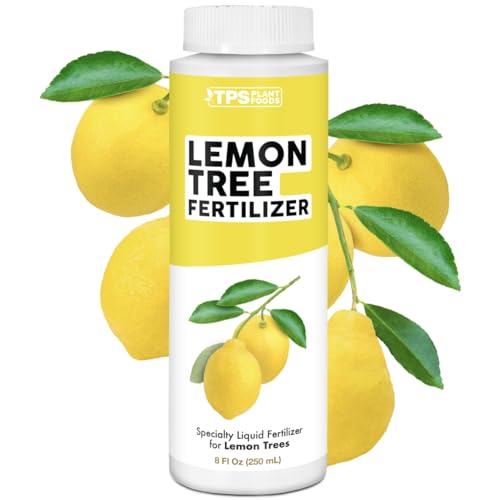
A fertilizer specially formulated for lemon trees and citrus fruit. Ideal for lemon trees growing in pots
Pests

Aphids, spider mites, and mealybugs are common pests of citrus trees. These troublesome pests suck sap from the plant and curling leaves can be a symptom of an infestation. To diagnose pests as a cause, check the underside of leaves as this is where they tend to be seen in numbers.
Susan Poizner claims that ‘insecticidal soaps or horticultural oils’ - such as using neem oil on plants - can be sprayed onto plants to get rid of them. Spray both sides of the leaves, though repeated treatments may be required to completely eradicate the pests.
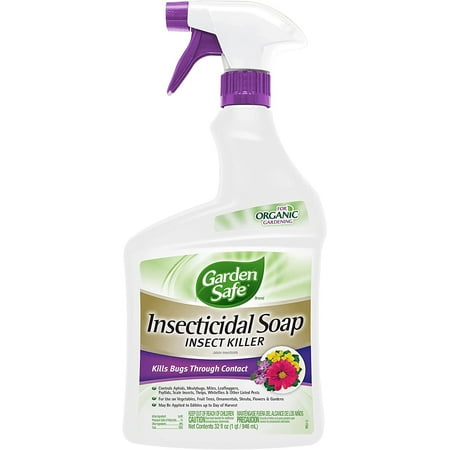
Insecticidal soap for organic gardening to control aphids, mealybugs, mites, leafhoppers, psyllids, scale insects, thrips, whiteflies and other listed pests.
Disease
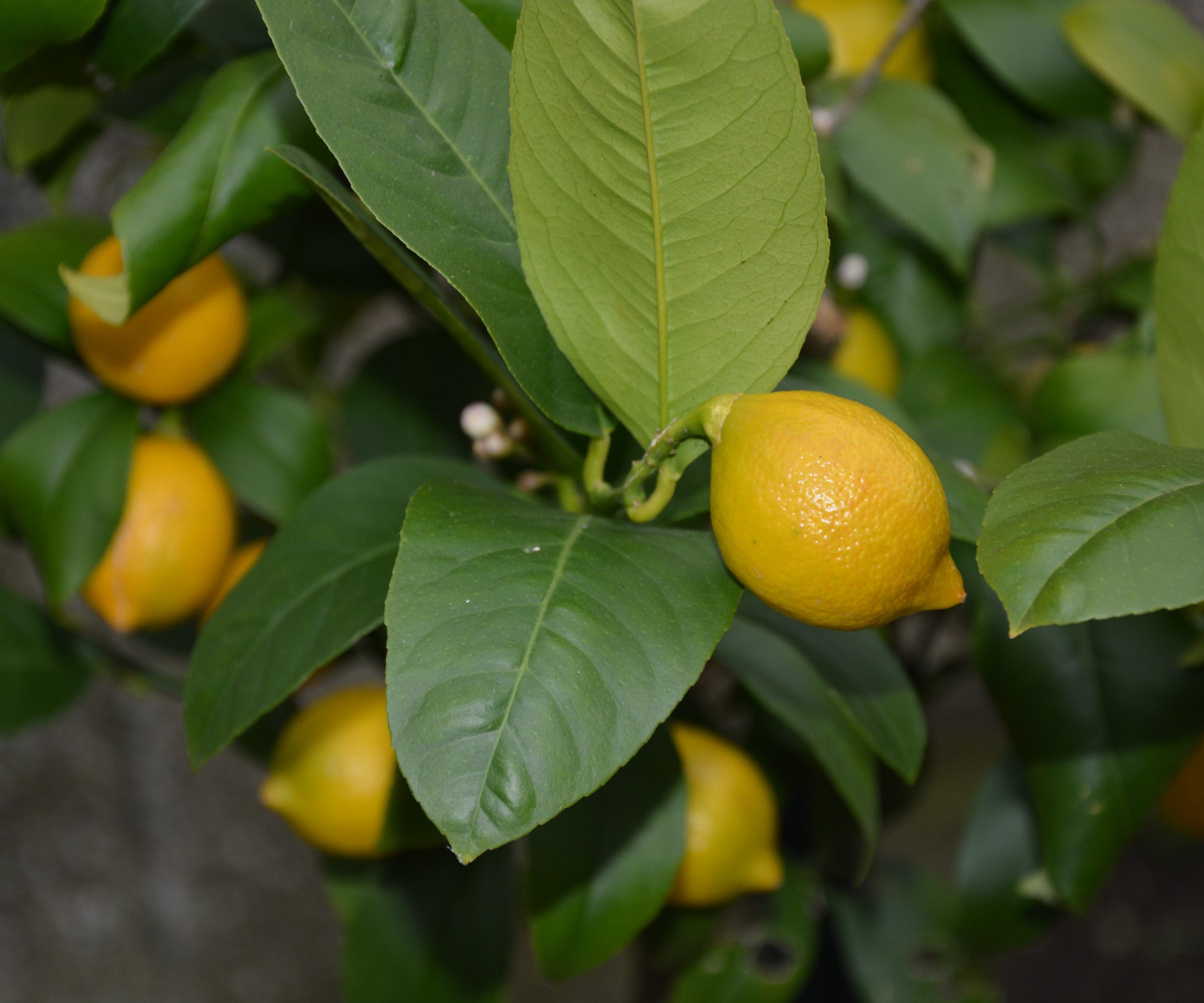
The most potentially devastating disease that can cause citrus leaves to curl is citrus greening. It is a very severe citrus disease that can destroy trees - as there is no cure. The signs of citrus greening include discolored leaves, defoliation, and dieback and it is spread by insects travelling between citrus trees. Susan Poizner recommends: ‘If citrus greening is suspected, consult with a professional, as this disease requires specific management strategies.’
There are other more common diseases that can affect citrus leaves and cause leaf curl - and they are not as destructive as citrus greening. Fungal issues including bacterial blast, anthracnose, and botrytis can all result in leaves curling and dropping. Inspect trees for signs of fungal problems and spray affected plants with a copper fungicide.
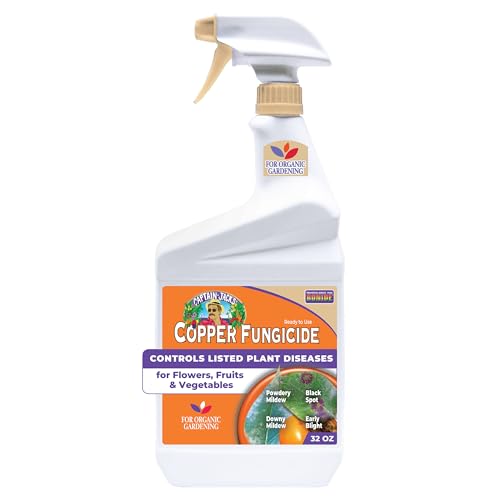
A ready-to-spray copper fungicide approved for organic gardening to control fungus and disease in your garden.
Lemon trees are hardy in US hardiness zones 8-11 and will suffer when the temperatures drop below 32°F. To care for a potted lemon tree in winter, move it into a frost-free and cool location to avoid cold damage to stems, leaves, and fruits - somewhere with a temperature of at least 40°F throughout the winter. Outdoor trees can be wrapped with horticultural fleece or a frost blanket to protect them from the winter colds, such as these plant covers available at Amazon.
Sign up to the Homes & Gardens newsletter
Design expertise in your inbox – from inspiring decorating ideas and beautiful celebrity homes to practical gardening advice and shopping round-ups.

Drew’s passion for gardening started with growing vegetables and salad in raised beds in a small urban terrace garden. He has worked as a professional gardener in historic gardens and specialises in growing vegetables, fruit, herbs, and cut flowers as a kitchen gardener. That passion for growing extends to being an allotmenteer, garden blogger, and producing how-to gardening guides for websites. Drew was shortlisted for the New Talent of the Year award at the 2023 Garden Media Guild Awards.
-
 Kevin Bacon and Kyra Sedgwick's rustic kitchen island is stunning, but controversial – designers say you can get the look without the hassle
Kevin Bacon and Kyra Sedgwick's rustic kitchen island is stunning, but controversial – designers say you can get the look without the hassleA popular material finds an unorthodox home in the couple's kitchen, but experts disagree on whether it should be used – here's how to do it instead
By Sophie Edwards
-
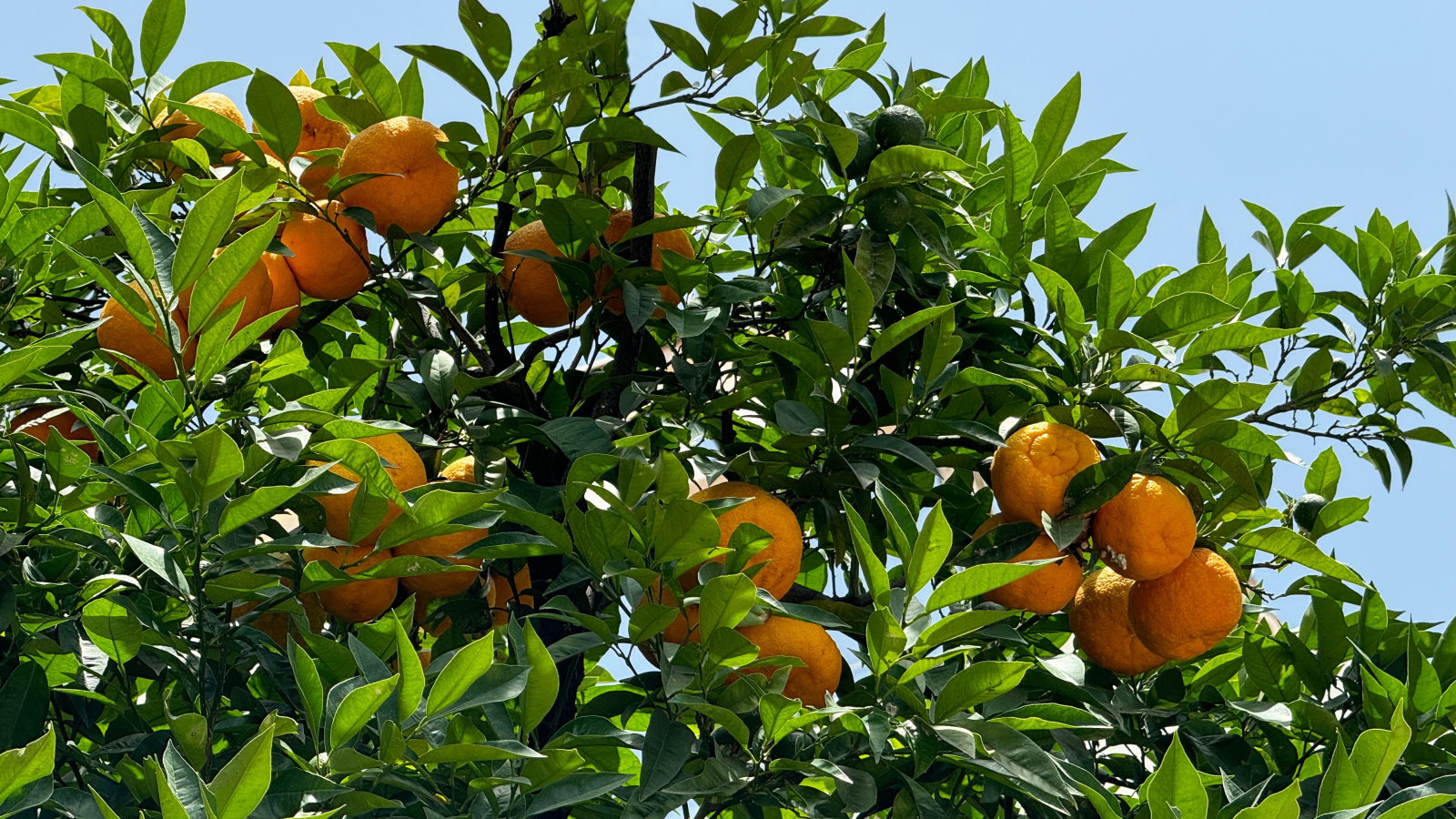 How to grow grapefruit for homegrown sweet and tangy, highly nutritious harvests – a fruit tree expert shares their planting and care tips
How to grow grapefruit for homegrown sweet and tangy, highly nutritious harvests – a fruit tree expert shares their planting and care tipsFrom planting to harvesting, this is all you need to know about grapefruit trees
By Drew Swainston
-
 I just discovered the best non-toxic product for getting rid of ants in your yard – and you probably already have it in your bathroom cupboard
I just discovered the best non-toxic product for getting rid of ants in your yard – and you probably already have it in your bathroom cupboardThis household item is an effective ant deterrent that doesn't leach harmful chemicals into your soil
By Tenielle Jordison
-
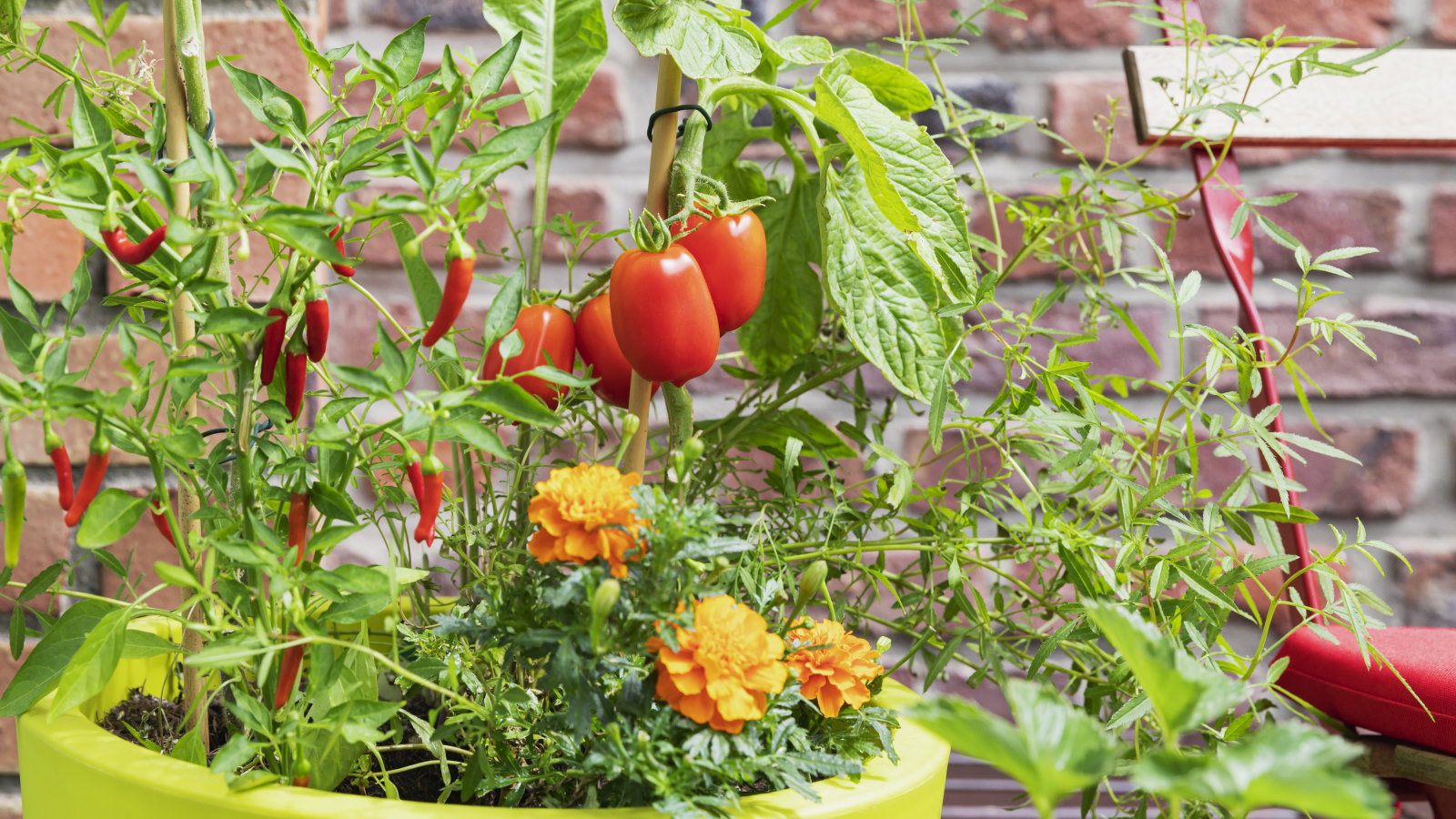 You'll get the best homegrown tomato crops if you plant them next to this one flower – discover why these two are a dream combination
You'll get the best homegrown tomato crops if you plant them next to this one flower – discover why these two are a dream combinationYour tomato plants will be pest-free and covered in fruits
By Drew Swainston
-
 What are beneficial nematodes? Plus how to use these microscopic organisms to combat common garden pests
What are beneficial nematodes? Plus how to use these microscopic organisms to combat common garden pestsSuitable for organic gardening and safe to use – beneficial nematodes are small but powerful
By Drew Swainston
-
 What are lawn shrimp – and 4 ways to combat them as recommended by pest control experts
What are lawn shrimp – and 4 ways to combat them as recommended by pest control expertsThe tiny critters can be a major inconvenience in a garden, plus they can also make their way into homes
By Drew Swainston
-
 How to stop foxes digging up bulbs – 5 methods to protect your blooms for spring
How to stop foxes digging up bulbs – 5 methods to protect your blooms for springKeep your plants safe from the curious creatures that could ruin your display
By Tenielle Jordison
-
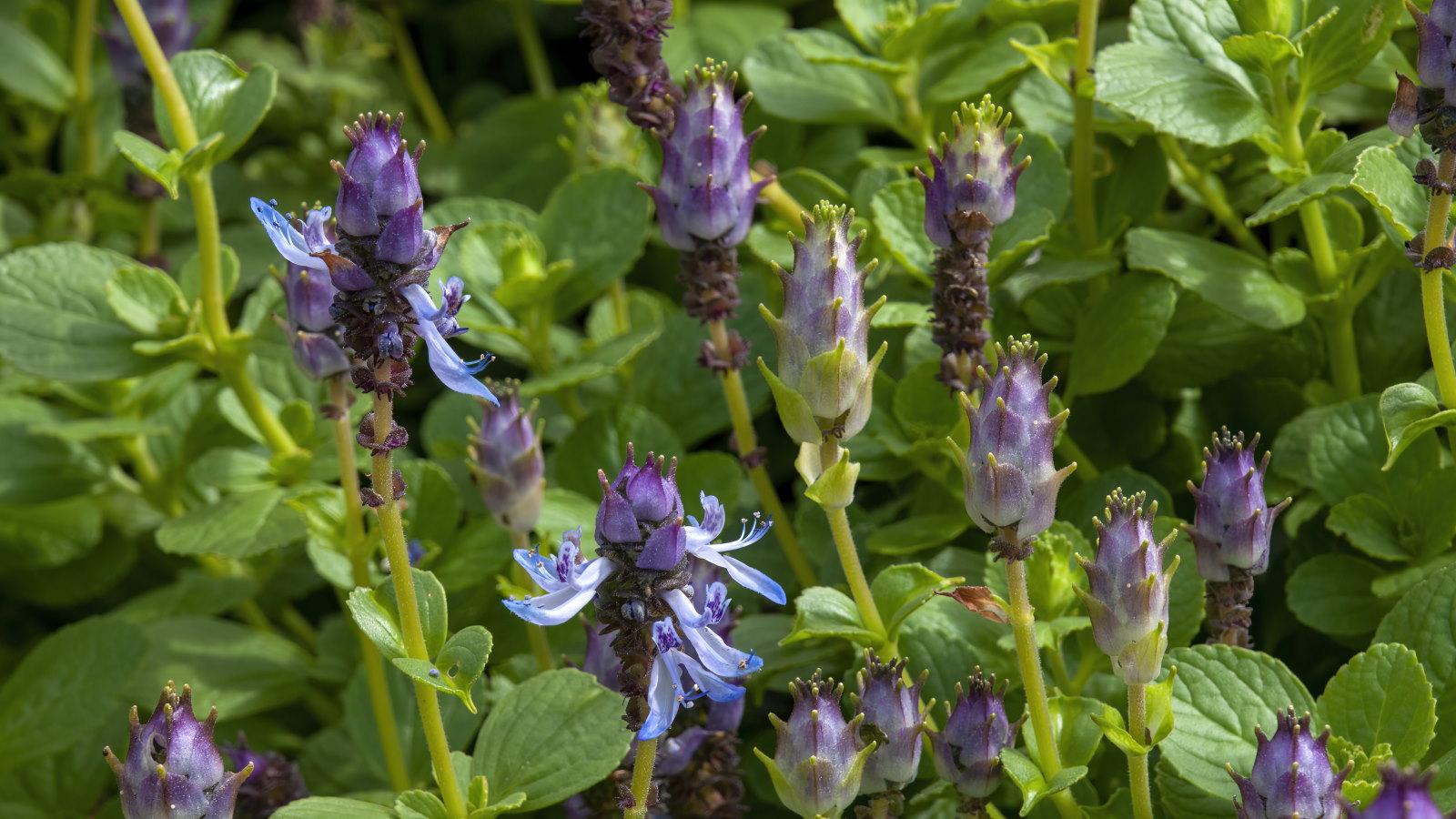 We've just found the best natural pest control for your yard – meet the Coleus canina plant
We've just found the best natural pest control for your yard – meet the Coleus canina plantAlso known as the 'scaredy cat plant', this strong-smelling perennial is known to repel cats, rabbits, and other animals
By Drew Swainston
-
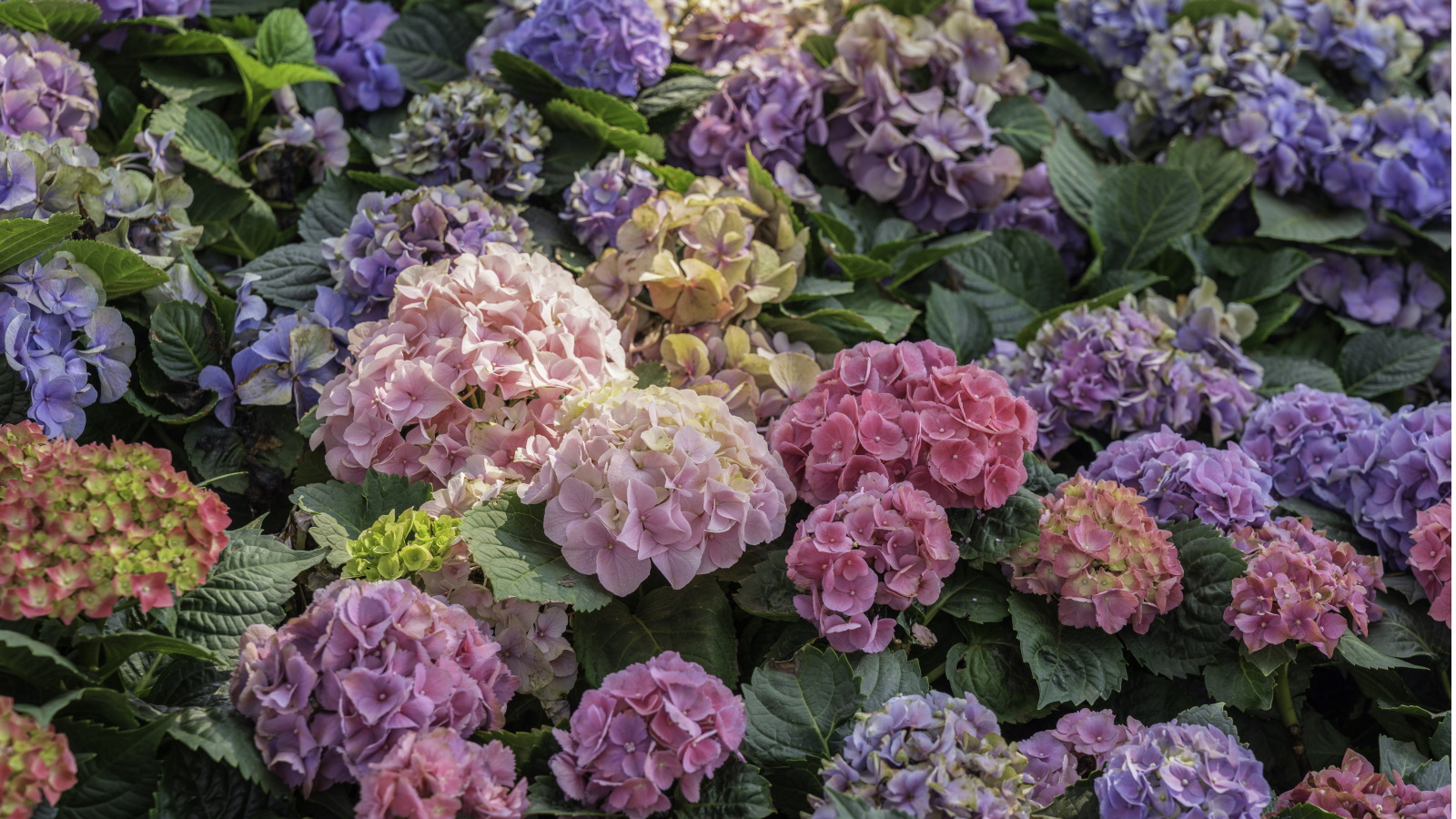 Deer munching on your hydrangeas? These 5 expert tips will protect your summer blooms from further damage
Deer munching on your hydrangeas? These 5 expert tips will protect your summer blooms from further damagePut precautionary measures in place now to keep your hydrangeas safe from hungry wildlife
By Tenielle Jordison
-
 5 common zucchini pests – and expert-recommended ways to protect your plants
5 common zucchini pests – and expert-recommended ways to protect your plantsDon’t let zucchini pests ruin your crops – learn to spot their presence and combat them quickly and effectively
By Drew Swainston